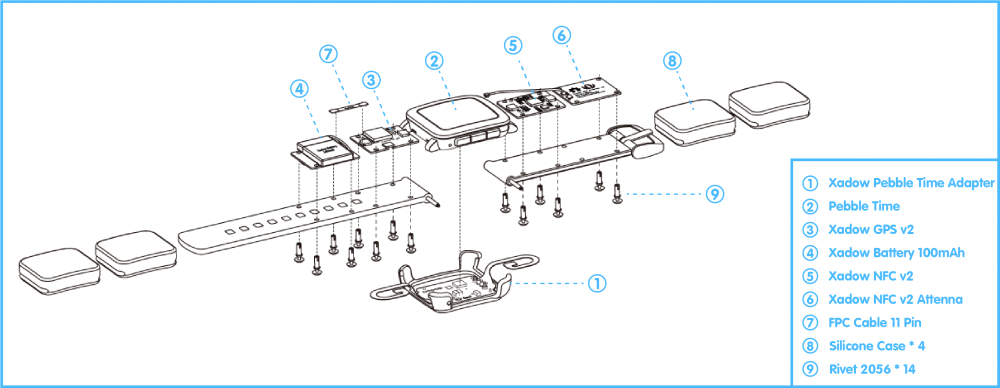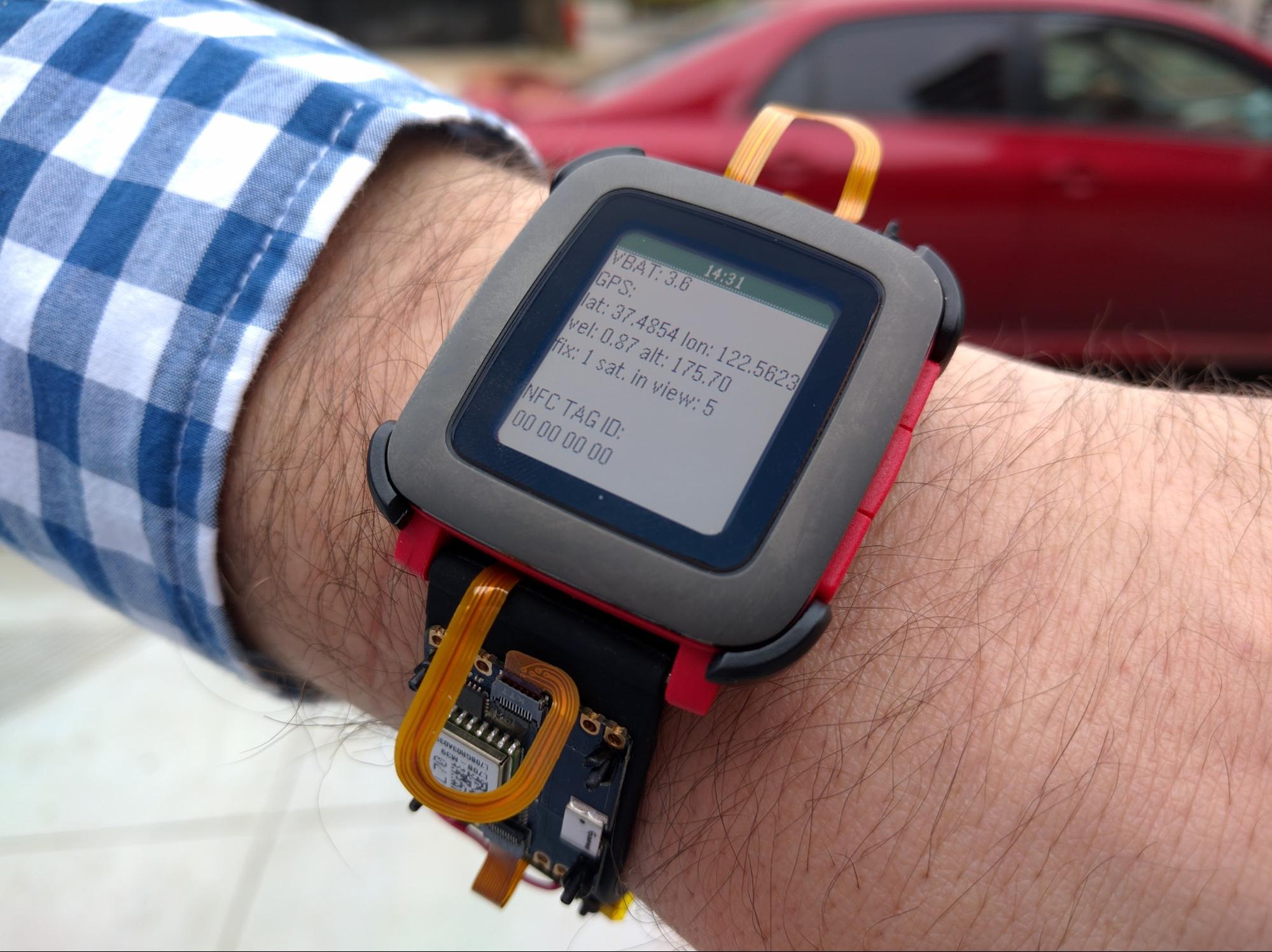Hands-on with the RePhone smartstrap kit for Pebble Time
For those that don’t already know, the RePhone smartstrap kit was part of a highly successful Kickstarter campaign by Seeed Studio to create the world’s first open source and modular smartphone. Part of their campaign was to create a smartstrap kit for Pebble Time that integrates with RePhone modules such as GPS, NFC, and external batteries. This is the first commercial smartstrap project I’ve managed to lay my hands on, and it’s awesome!
The box contains everything you need to get started:
- Xadow GPS v2 module
- Xadow NFC v2 module
- Xadow Battery 100mAh module
- A Pebble Time adaptor
- A 22mm watch strap with mounting holes
- Ribbon cables, Mounting rivets and silicone casings
- Instruction booklet

RePhone Strap Kit diagram courtesy of Seeed Studio
Assembling the components was a reasonably straightforward process, although my chunky fingers and poor eyesight didn’t always make it quite as easy as it should have been. First you need to fix the adaptor to the back of your Pebble, then attach the watchstrap, making sure to feed the ribbon cables that extend from the adaptor through on top of the watch strap. Each module needs to be interconnected as per the instructions above.
Seeed Studio provide an open source Pebble watchapp which displays GPS coordinates, velocity, altitude, satellites and NFC (when in range). This project can be compiled with the local Pebble SDK or CloudPebble.
After getting everything hooked up and the watchapp installed, I was disappointed when the GPS didn’t initially appear to be working. I headed outside with my watch and stood in the street for a while, and pretty soon the number of visible satellites started to increase and then the GPS position was established.

It honestly felt like wearing some kind of futuristic time travel device with all of the wires and circuits exposed. I wouldn’t recommend walking into an airport like this, but I actually quite enjoyed the aesthetics.
The next thing to test was the NFC module, and thankfully this was really simple. I held my NFC enabled phone against the NFC antenna and sure enough, the tag ID appeared. I also used it to successfully scan another NFC chip, but this one was embedded directly inside someone's hand. Apparently there’s some seriously dedicated next-level biohackers at Pebble!
The battery module supplied with the kit is used to power the GPS and NFC modules, but you can also use it to charge the Pebble itself. I didn’t have time to perform any testing other than confirm that the Pebble was infact charging from the strap’s battery. The battery module is 100mAh, compared to the 150mAh battery in the Pebble Time, pretty impressive for something so small!
There are other modules available for the RePhone kit, like GSM+BLE, audio, touch screen and LEDs, but it doesn’t look like the smartstrap kit is able to take advantage of those. However, I did stumble across a page on the Seeed Studio wiki, which explains how to build your own firmware for the smartstrap adaptor itself. So if you’re interested in taking things further, it’s great to know there are more options are available for the hardcore hardware hacker.
The Pebble developer community have been eagerly hacking away with their kits, ishotjr has published some unboxing photos on his blog and created a useful wiki. If you want to get involved, you can find them in #smartstraps over on the Pebble Developer Discord.
We've only just scratched the surface of what's possible with this smartstrap kit and we can't wait to see what the community produce. If you build a custom app using the RePhone Smartstrap Kit, we'd love to hear about it.
Categories
- All Posts
- #makeawesomehappen
- At the Pub
- Beautiful Code
- CloudPebble
- Down the Rabbit Hole
- Freshly Baked
- Timeline